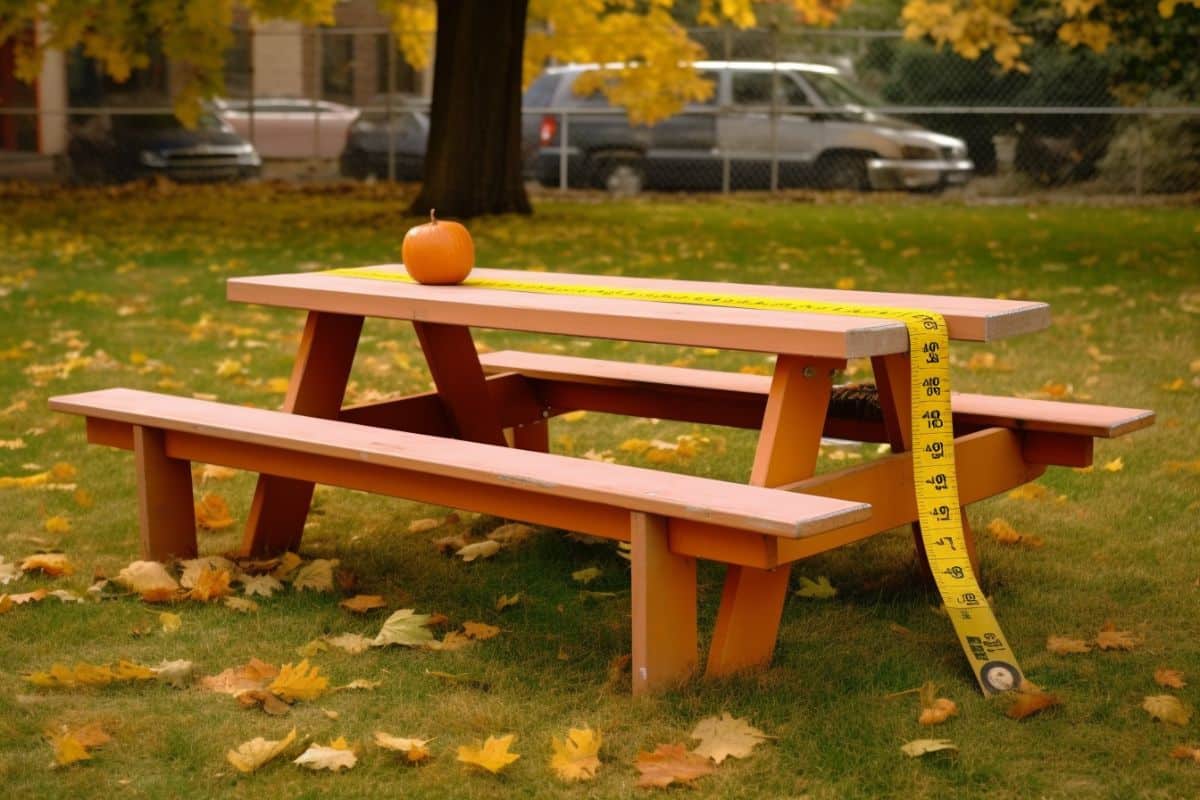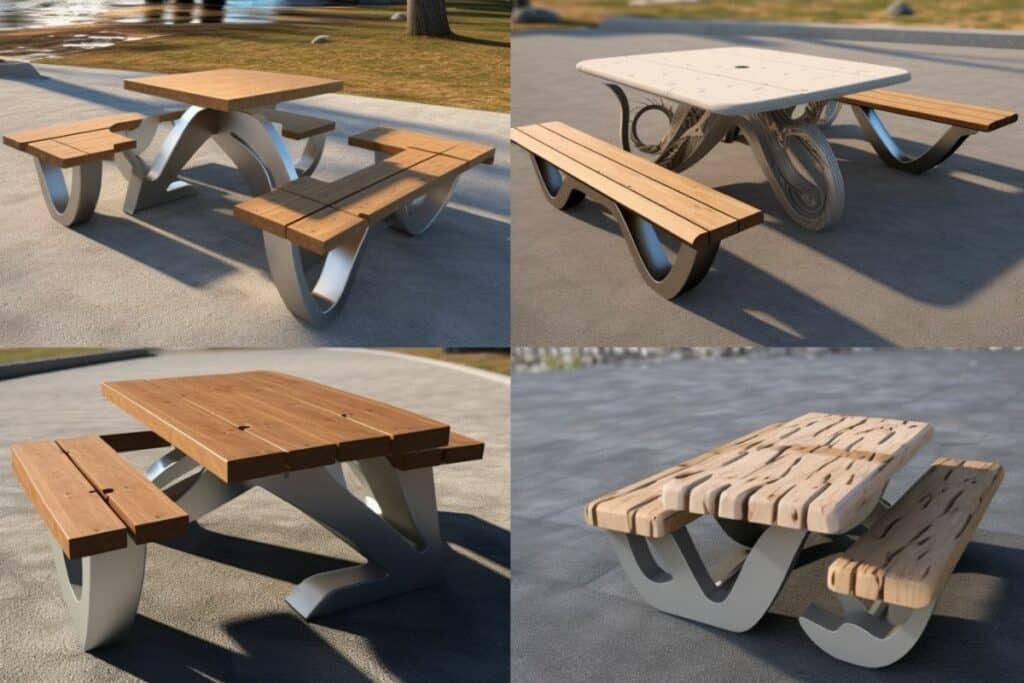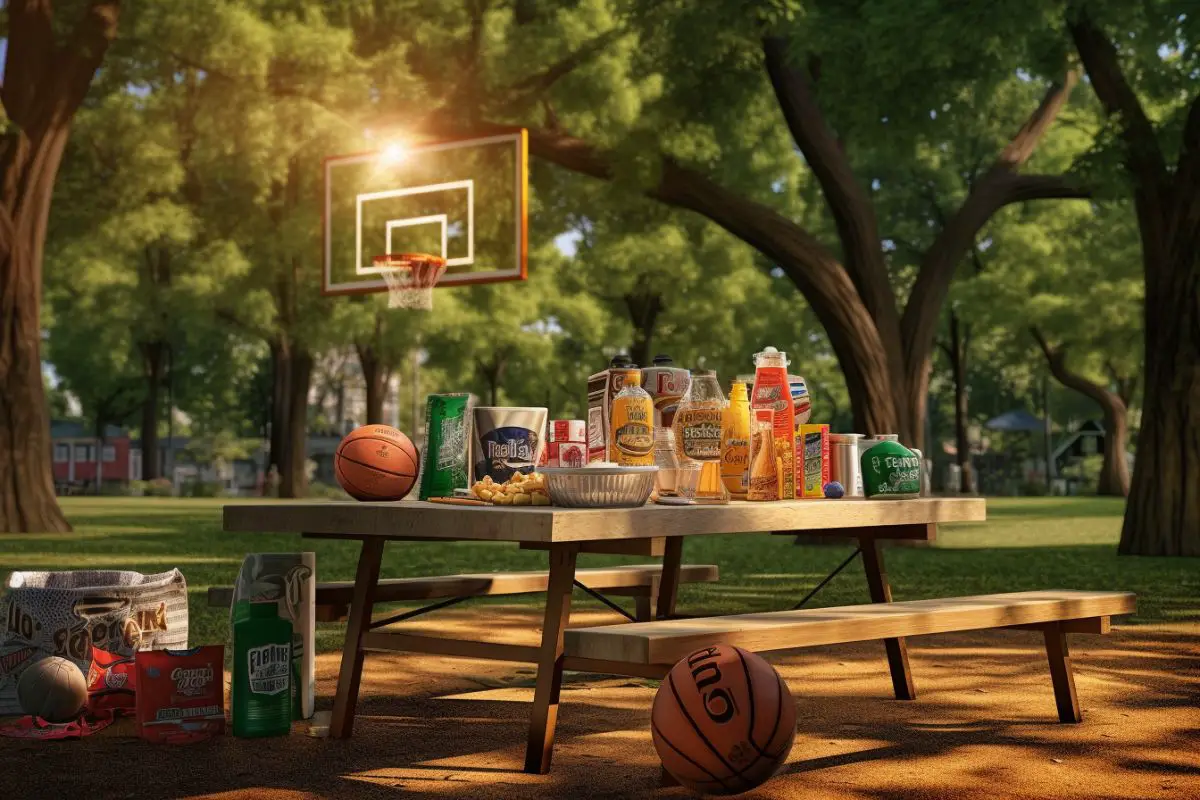So, you’re planning a picnic or an outdoor gathering, and the thought of ‘how big is a picnic table?’ has crossed your mind. Well, you’ve come to the right place!
Picnic tables are versatile pieces that not only provide seating but also help set the ambiance for those memorable moments spent with friends and family.
In this article, we’ll explore standard dimensions, different styles, and materials to give you a better understanding of what’s available on the market.
But wait, there’s more! We’ll also discuss children’s table sizes which can make your little one feel extra special during their outdoor adventures.
Plus, if you’re curious about National Park measurements, we have that covered too.
With various style options and recommendations on wood types and finishes to consider, you’ll become an expert in no time.
So grab your favorite drink, sit back (preferably at a picnic table), and let’s dive into everything you need to know about choosing the perfect size for your next outdoor event!
Standard Dimensions Of A Picnic Table

You might be wondering about the standard dimensions of that outdoor gathering spot where you love to share meals and laughter with friends and family.
Picnic tables come in a variety of shapes, sizes, and materials, but when it comes to rectangular picnic tables, there are some common measurements you can expect.
The standard picnic table dimensions for an adult-sized table include a tabletop length of 6 to 8 feet, a width of approximately 30 inches, and a height between 28 to 30 inches.
The size of your picnic bench is also crucial for comfort during those wonderful outdoor gatherings, like watching a movie in your backyard. Typically, the seats for rectangular picnic tables are designed in tandem with their respective table size.
For example, if your table is six feet long, the benches will also be around six feet in length. Bench heights usually range from 16 to 18 inches high (from ground level), while their widths may vary between nine and twelve inches wide.
Knowing these common dimensions can help you make informed decisions when selecting or building a suitable picnic table for your space.
Keep in mind that these are just general guidelines – feel free to customize your own picnic table size according to your specific needs or preferences!
To ensure optimal functionality and comfort at your next al fresco gathering, consider factors such as available space in your yard or park area, the number of anticipated guests or family members using the table regularly, and any accessibility requirements for wheelchair users or people with mobility challenges before deciding on the perfect fit.
Children’s Picnic Table Size

Imagine a kids’ table that’s as cozy as a nest, where they can comfortably gather to enjoy their outdoor feast.
When considering a children’s table size for picnics, it’s essential to consider the age of the kids who’ll be using it, as well as how much space you have available in your backyard or picnic area.
A properly sized picnic table ensures that every child has enough room to sit and eat safely while providing ample play and socializing space.
Children’s picnic tables are typically smaller than adult-sized versions but still come in various dimensions based on age ranges and intended use.
For toddlers aged 2-4 years old, look for a table size around 20-24 inches high with bench heights between 10-12 inches. Preschoolers aged 4-6 years may require slightly larger tables at approximately 22-26 inches high, with benches around 12-14 inches tall. Finally, school-aged children (7+ years) might need even larger table dimensions – roughly 28-32 inches high with bench heights of about 14-16 inches.
When selecting the right children’s picnic table size for your specific needs, keep in mind both the number of kids you anticipate hosting and any additional activities or games they might partake in during their visit.
Consider if there will be enough space around the picnic area for running or playing when not seated at the table.
By factoring in these elements along with age-appropriate dimensions, you’ll create an inviting environment that encourages social interaction, fun-filled meals, and long-lasting memories among young guests.
National Park Picnic Table Measurements
When exploring national park measurements, it’s essential to think about the impact these vast spaces have on your overall picnic experience, as they offer endless opportunities for adventure and discovery.
National parks are home to various types of outdoor furniture, including picnic tables that cater to visitors’ needs. These picnic tables not only provide a comfortable space for you to enjoy your meals but also serve as a gathering spot where you can connect with nature and create lasting memories with family and friends.
In most national parks across the United States, you’ll find standard picnic tables made from durable materials like wood or metal, designed to withstand harsh weather conditions.
These tables typically measure around six feet in length and offer attached benches on either side, allowing seating for approximately six individuals comfortably.
However, some parks may feature larger or smaller variations of this classic design depending on factors such as available space or specific visitor requirements.
As you plan your next visit to one of our country’s beautiful national parks, keep in mind the diverse range of outdoor furniture available for use.
By knowing what options are at your disposal when it comes to seating arrangements like standard picnic tables with attached benches or other alternatives, you can enhance your experience within these natural wonders even further.
So go ahead and pack up that delicious food in a cooler and enjoy a memorable meal amidst the breathtaking landscapes that our national parks have to offer!
Different Style Options Of Picnic Tables

As you venture out to explore the great outdoors, consider the variety of foldable and portable picnic table styles available to elevate your dining experience amidst nature’s splendor.
These versatile tables come in different sizes, shapes, and style options that can easily blend with your backyard setup or be taken along on an adventure.
From compact designs perfect for a romantic picnic for two to larger models that can accommodate family gatherings, there is a foldable picnic table tailored to suit every need.
When exploring different style options, it’s important to consider factors such as portability, durability, weight capacity, and ease of assembly. Traditional wooden picnic tables are known for their sturdiness and classic appearance; however, they may be heavier and more difficult to transport than other materials.
Aluminum and plastic foldable picnic tables offer lightweight alternatives while still providing ample strength and support. Moreover, some models feature folding bench seats or detachable benches for added convenience.
With so many choices available in today’s market, finding the perfect foldable picnic table requires some research and consideration of your specific needs.
Whether you’re planning a weekend camping trip or simply want a comfortable outdoor dining space in your own backyard, investing in a quality portable table will make all the difference when it comes time to enjoy nature’s beauty over a meal with loved ones.
The right combination of size, shape, and material choice will ensure that every outdoor dining experience becomes memorable and enjoyable – no matter where life takes you!
Common Materials of Picnic Tables
You’ll find that foldable picnic tables come in a variety of materials, each with its own unique benefits and drawbacks to consider when making your selection.
The most common materials used for picnic tables are wood, plastic, and metal. Each material has its own distinct characteristics, which will ultimately influence the durability, maintenance requirements, and appearance of the table.
- Wood: A classic choice for a picnic table that offers a natural look and feel. Wood is sturdy and can be easily painted or stained to match any style preference. However, it requires regular maintenance, such as sealing or staining, to prevent rotting or warping.
- Plastic: Lightweight and easy to clean, plastic picnic tables are an affordable option. They resist stains and weather damage better than wood but may not have the same level of sturdiness or aesthetic appeal.
- Metal: Often made from aluminum or steel, metal picnic tables provide excellent durability and require minimal maintenance. They can be more expensive than wood or plastic options but offer long-lasting value.
- Recycled Plastic: An eco-friendly option that resembles wood in appearance but is made from recycled materials like milk jugs. It’s low-maintenance, doesn’t warp or rot like wood does over time but may lack some of the warmth offered by traditional wooden tables.
- Concrete: Although less common due to their weight and cost, concrete picnic tables provide unmatched durability against weather elements while giving off a contemporary vibe.
When choosing a material for your picnic table, it’s important to weigh the pros and cons based on factors such as budget constraints, desired aesthetics, maintenance requirements, and overall use frequency.
Keep in mind how you plan on using the table – whether it’s primarily for outdoor gatherings with friends and family or simple backyard relaxation – as this will help guide your decision-making process too.
By considering these aspects thoroughly before making your purchase decision, you’ll ensure that you select a high-quality picnic table that meets your needs and enhances your outdoor living space.
Best Wood Types of Picnic Tables
Now that we’ve discussed the common materials used for picnic tables, let’s dive into the best wood types to choose from.
As you’re planning your ideal outdoor gathering spot, selecting the right type of wood can make all the difference in terms of durability, style, and maintenance requirements.
The best wood types for a picnic table offer a balance between strength and style while requiring minimal upkeep.
One popular choice is cedar; this attractive reddish-brown wood is naturally resistant to decay and insect damage, and it has a pleasant scent.
Another great option is pressure-treated pine, which has been treated with chemicals to resist rot, insects, and moisture damage. This makes it an affordable yet sturdy choice for both tabletops and benches.
If you prefer hardwoods for their durability and rich appearance, teak or oak could be perfect options as well. Teak boasts natural oils that protect it from decay while oak offers immense strength – just remember that these high-quality woods often come with higher price tags.
As you select the best wood type for your picnic table project, keep in mind how much time you’re willing to invest in ongoing maintenance such as sealing or staining.
Cedar typically requires less attention than other options due to its natural resistance against decay; however, applying a protective sealant every few years will help prolong its life even further.
For pressure-treated pine or hardwood choices like teak or oak, regular staining or sealing will be essential for protecting them from weather-related damage over time – but rest assured knowing that with proper care, your new outdoor addition will serve as a welcoming space for family gatherings and picnics year after year!
Stain and Paint Recommendations
When it comes to adding a splash of color or protecting your wooden masterpiece, selecting the ideal stain or paint is crucial for ensuring its longevity and aesthetic appeal.
Stain and paint recommendations for your picnic table can vary depending on factors such as wood type, desired appearance, and maintenance requirements.
To provide an inviting surface area and create a comfortable environment for guests, consider both the practical aspects of stains and paints as well as their visual impact.
For enhancing the natural beauty of your picnic table while providing protection from moisture and UV rays, opt for a high-quality exterior wood stain. Oil-based stains are generally more durable than water-based options and penetrate deeper into the wood grain.
Semi-transparent stains offer a balance between showing off the wood’s texture while still adding some color variation. Look for products specifically designed for outdoor furniture that include mildew resistance properties to minimize maintenance efforts in damp environments.
The choice of paint can greatly influence the overall look of your picnic table while also offering additional protection against weathering elements.
Acrylic latex exterior paints are recommended due to their durability, water resistance, and ease of application compared to oil-based alternatives.
When selecting colors, keep in mind that lighter shades tend to show dirt more easily but may be preferable if you want to avoid overheating on sunny days.
Regardless of which option you choose – stain or paint – remember that regular upkeep is essential in preserving your picnic table’s quality over time so it continues providing an enjoyable gathering space season after season.
Conclusion and final thoughts ?
In conclusion, a perfect picnic table isn’t one-size-fits-all. It’s essential to consider the dimensions, style, and materials that suit your needs, like bees to honey. Whether you’re after a cozy children’s table or following National Park standards, there’s something for everyone.
Remember to choose the right location, maybe next to a hamock so you can relax as well.
With all these factors in mind, you’ll create an inviting outdoor space where memories will unfold.
